Introduction
The Renaissance Festival, also known as a Renaissance Faire or Ren Faire, celebrates the Renaissance era, taking attendees back in time to experience the sights, sounds, and ambiance of this historical period. It’s a place where people can dress up in authentic Renaissance attire, partake in festivities, and immerse themselves in the culture of the time. From jousting tournaments and live performances to artisan crafts and delicious food, the Renaissance Festival offers a unique and thrilling experience for all who attend.

One of the most exciting aspects of the Renaissance Festival is the opportunity to dress up in Renaissance-inspired costumes. Whether you portray a noble, a peasant, a witch, or a pirate, there are countless options for creating the perfect Renaissance ensemble. The festival provides a space for self-expression and creativity, allowing attendees to step into their favorite Renaissance characters’ shoes and fully embrace the era’s spirit. So, let’s dive into the world of Renaissance fashion and discover the best attire for your next trip to the Renaissance Fair.
Embracing the Renaissance Festival Atmosphere
When attending a Renaissance Festival, embracing the event’s ambiance is essential. The festival aims to recreate the atmosphere of the Renaissance era, with its elaborate costumes, lively music, and vibrant displays. Whether it’s the presence of Queen Elizabeth herself or the stunning Renaissance art and musical instruments on display, every aspect of the festival contributes to transporting attendees back in time. By immersing yourself in the sights and sounds of the Renaissance, you can fully appreciate this fascinating period’s rich history and culture.
The Importance of Authenticity in Your Attire
When it comes to dressing for a Renaissance Festival, authenticity is key. Wearing authentic Renaissance attire adds to the event’s overall atmosphere and allows you to immerse yourself in the time period fully. It’s important to choose clothing that reflects the fashion of the Renaissance era, paying attention to details such as fabric, silhouette, and accessories. By wearing authentic attire, you not only enhance your own experience but also contribute to the overall authenticity and ambiance of the festival. So take the time to research and select clothing that true to the time period, and you’ll be sure to stand out and make the most of your Renaissance Festival experience. Now, can you have fun if you are not in costume? Yes, of course! But dressing up is half of the fun!
Choosing Your Character and Style
Choosing your character and style is an exciting part of preparing for the Renaissance Festival. The possibilities are endless, ranging from noble and regal characters to peasants, commoners, witches, and pirates. Your character choice will determine the style and type of costume you will wear. Whether you envision yourself as a noble princess in a flowing gown or a swashbuckling pirate with a tricorn hat and eye patch, the Renaissance Festival allows you to embrace your character and bring it to life fully.
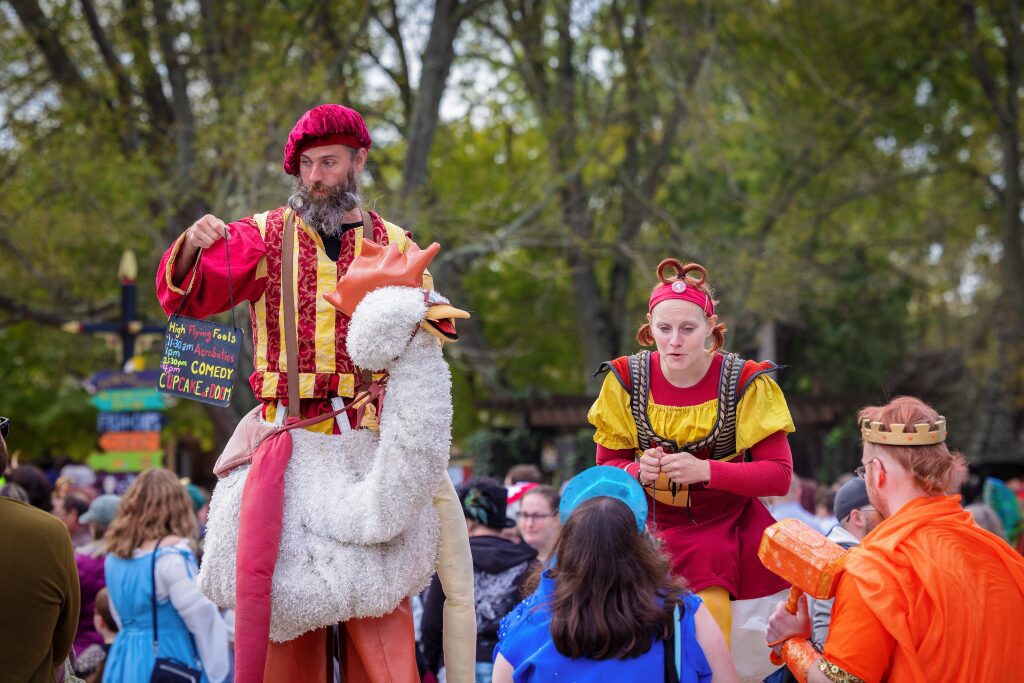
Noble vs. Peasant: Deciding Your Festival Persona
When choosing your festival persona, you can portray a noble or a peasant. Each persona offers a unique style and character to embody during the Renaissance Festival. Here are some factors to consider when deciding between a noble and a peasant persona:
- Nobles:
- Embody the elegance and opulence of the upper class.
- Wear elaborate and luxurious clothing with intricate details.
- Portray a regal and refined character.
- Accessorize with jewelry, tiaras, and other noble accessories.
- Peasants:
- Embrace the simplicity and practicality of the commoners.
- Wear more modest and rustic clothing.
- Portray a down-to-earth and relatable character.
- Accessorize with simple accessories like baskets or tools.
Ultimately, the choice between a noble and a peasant persona comes down to your personal style and preferences. Consider the character you want to portray and the type of costume that resonates with you the most.
Iconic Figures and Roles to Inspire Your Outfit
If you’re looking for inspiration for your Renaissance Festival outfit, iconic figures and roles from the Renaissance can serve as great sources. Whether you want to channel the elegance of a Renaissance princess or the bravery of a knight, there are numerous options to choose from. Here are some iconic figures and roles to consider:
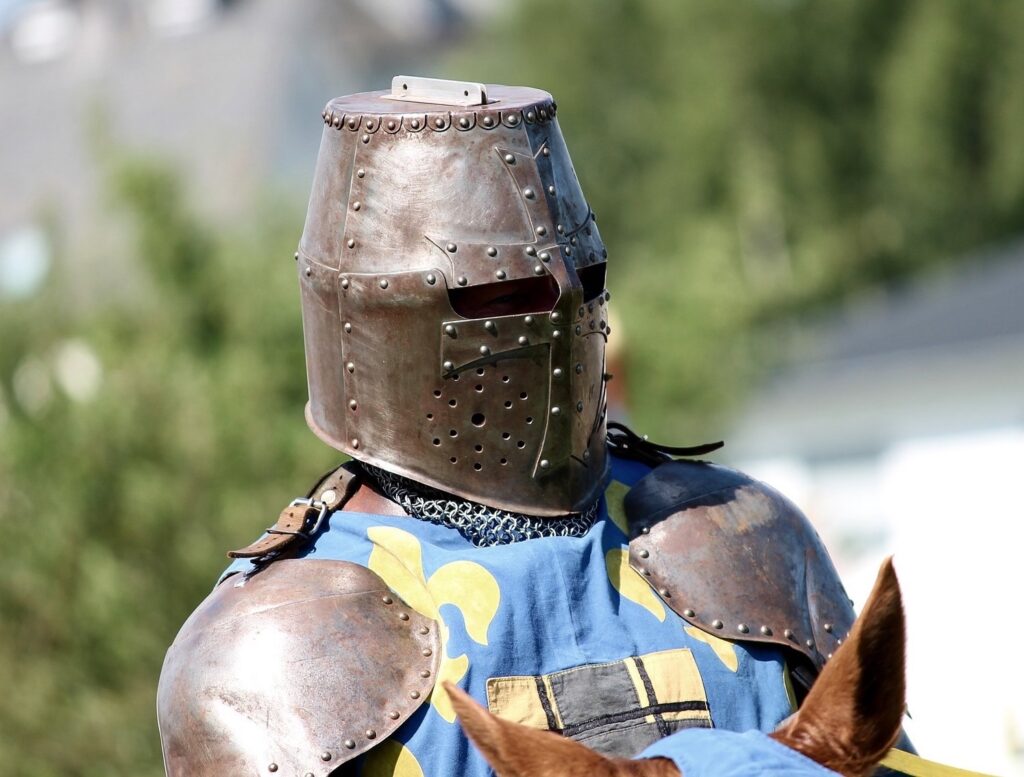
- Renaissance Princess: Embody the grace and beauty of a Renaissance princess with a flowing gown, elaborate headpiece, and delicate accessories.
- Knights: Portray the chivalry and valor of a knight with armor, a sword, and a shield.
- Artists and Scholars: Showcase the intellectual and creative spirit of Renaissance with a costume inspired by artists like Leonardo da Vinci or scholars like Galileo Galilei.
Drawing inspiration from these iconic figures, you can create a unique and captivating Renaissance Festival outfit that captures the era’s essence.
Where to Find Your Renaissance Attire
Finding the perfect Renaissance attire for the festival is an exciting endeavor. There are several options available to source your costume, including:
- Thrift Shopping: Visit local thrift stores to find unique and affordable pieces that can be transformed into Renaissance attire.
- Online Resources: Browse online platforms and specialty websites that offer a wide range of Renaissance costumes and accessories.
- Amazon: Explore the vast selection of Renaissance attire available on Amazon, including ready-to-wear costumes and individual pieces.
No matter where you choose to find your Renaissance attire, be sure to allocate enough time for research and shopping to ensure you find the perfect pieces for your festival look.
Tips for Thrift Shopping Historical Garb
Thrift shopping for historical garb can be a rewarding and budget-friendly option for finding Renaissance attire. Here are some tips to keep in mind when thrift shopping for historical garb:
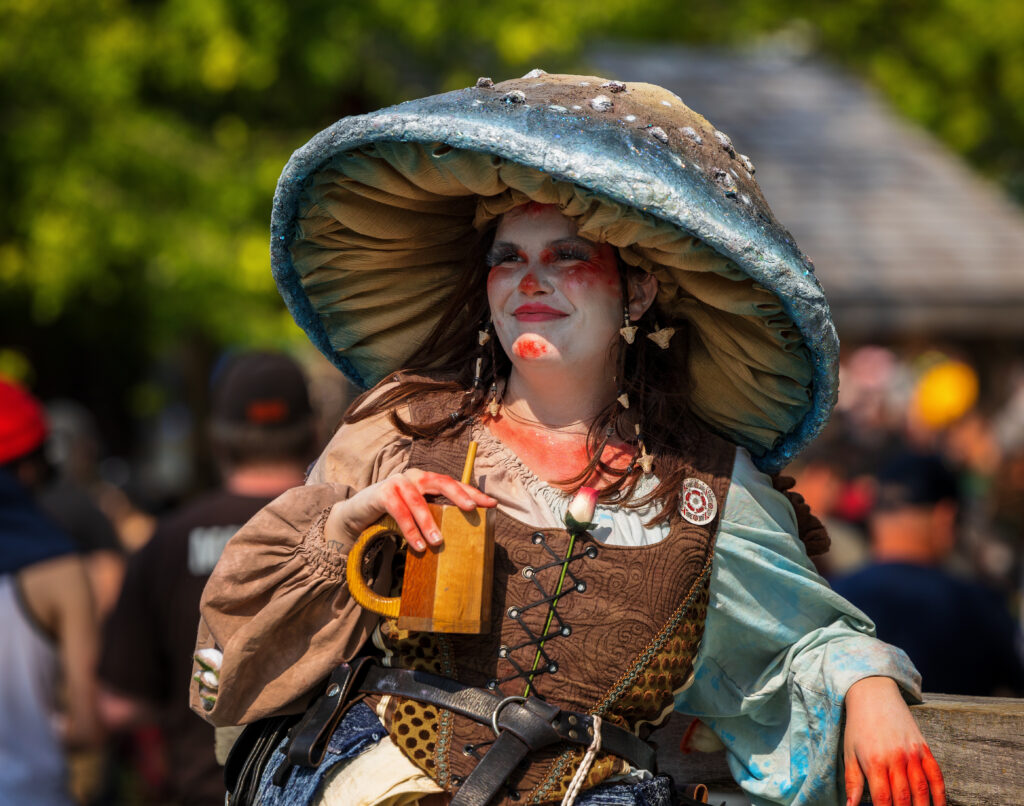
- Research: Familiarize yourself with the key elements of Renaissance fashion to help you identify suitable pieces while thrift shopping.
- Be Open-Minded: Keep an open mind and be willing to repurpose and alter thrifted items to fit your desired Renaissance look.
- Look for Quality: Seek out well-made items with unique textures, patterns, and details that can add an authentic touch to your costume.
- Mix and Match: Don’t be afraid to mix and match different thrifted items to create a unique and personalized Renaissance ensemble.
- Accessories: Thrift stores often have a wide selection of accessories like belts, hats, and jewelry that can complement your Renaissance attire.
Thrift shopping for historical garb is a cost-effective option that allows you to create a truly unique Renaissance Festival outfit.
Online Resources for Authentic Costumes
If thrift shopping isn’t your preferred option, numerous online resources offer a wide range of authentic Renaissance costumes. Here are some online platforms to consider:
- Specialty Websites: Explore specialty websites that cater specifically to Renaissance attire, offering a wide range of clothing, accessories, and footwear.
- Etsy: Browse handmade and vintage items on Etsy, where you can find unique and authentic Renaissance costumes from independent sellers.
- Amazon Amazon offers a vast selection of Renaissance costumes and accessories, making it a convenient option for finding authentic attire.

When shopping online, be sure to read customer reviews, check sizing charts, and consider the estimated shipping time to ensure a smooth and satisfactory purchasing experience. Online resources provide a convenient and reliable option for finding high-quality and authentic Renaissance costumes.
A Beginner’s Guide to Crafting Your Ensemble
For those who enjoy a do-it-yourself approach, crafting your Renaissance ensemble can be a fun and rewarding experience. Here’s a beginner’s guide to crafting your ensemble:
- Research: Gather inspiration and research different Renaissance styles and techniques.
- Supplies: Collect the necessary materials, such as fabric, patterns, and trims.
- Tutorial Videos: Watch tutorial videos on platforms like YouTube to learn different sewing and crafting techniques.
- Step-by-Step: Follow step-by-step guides to create each ensemble component, from the chemise to the outer layers.
- Personalization: Add personalized touches, such as embellishments or customized accessories, to make your ensemble unique.
Crafting your ensemble allows you to unleash your creativity and create a truly personalized Renaissance Festival outfit that reflects your style and preferences.

Customizing Your Look with Accessories
Accessories play a crucial role in completing your Renaissance look and adding personalized touches. Here are some accessories to consider:
- Headwear: Choose a headpiece that complements your ensemble, such as a muffin cap, bonnet, or headscarf.
- Cloak: A cloak can add drama and elegance to your Renaissance outfit. Opt for a cloak made of luxurious fabric, such as velvet or brocade, to enhance the overall look.
- Vest: A vest can be worn over the doublet or bodice to add layers and textures to the ensemble. Choose a vest in a contrasting color or pattern to make a statement.
- Jewelry: Consider adding jewelry, such as necklaces, bracelets, and rings, to enhance your Renaissance look and add a touch of sparkle.
- Other Accessories: Explore additional accessories like belts, pouches, and fans to further customize your ensemble and make it truly unique.
By carefully selecting and incorporating accessories, you can elevate your Renaissance look and create a visually captivating ensemble.
Step-by-step Guide/Process for Assembling Your Costume
Assembling your Renaissance costume requires careful planning and organization. Here’s a step-by-step guide to help you through the process:
- Research: Familiarize yourself with the style and components of a Renaissance outfit.
- Gather Materials: Collect all the necessary materials, including fabric, patterns, and trims.
- Create a Wardrobe Plan: Plan out your wardrobe, including the chemise, corset, doublet, bodice, hose, and accessories.
- Sew and Construct: Follow the patterns and tutorials to sew and construct each component of your costume.
- Try On and Adjust: Try on the different pieces as you go and make any necessary adjustments for the perfect fit.
- Final Touches: Add the finishing touches, such as embellishments, accessories, and hairstyles, to complete your Renaissance ensemble.
By following this step-by-step guide, you can ensure that each component of your Renaissance costume is carefully crafted and assembled, resulting in a stunning and authentic look.
Step 1: Selecting Your Base Garments
The first step in creating your Renaissance festival outfit is selecting your base garments. These are the foundational pieces that will form the core of your attire. For women, a chemise or blouse is an essential component. This loose-fitting, lightweight garment is typically made of cotton or linen and is worn underneath the rest of your ensemble. It provides a comfortable and breathable layer that will keep you cool during the festivities.

For men, a doublet is a popular choice for a base garment. This close-fitting jacket is typically made of velvet or brocade and can be paired with a shirt or chemise. The doublet adds structure and elegance to the overall look, and can be customized with various embellishments such as french buttons or embroidery.
Step 2: Layering for Authenticity and Comfort
Once you have your base garments selected, it’s time to layer for both authenticity and comfort. Layering not only adds visual interest to your outfit, but it also allows you to adapt to changing weather conditions throughout the day.
For women, a bodice is a popular choice for adding structure and shaping to the silhouette. A bodice is a fitted garment that typically laces up the front or back and can be made of various materials such as brocade or leather. Pair it with your chemise or blouse and a skirt for a complete look that will impress fellow faire goers.

Men can layer their base garments with a vest, which adds a touch of formality and sophistication. A vest can be made of velvet or brocade and can be worn over a shirt or doublet. It provides an extra layer of warmth without sacrificing style.
Step 3: Accessorizing to Complete Your Look
To truly complete your Renaissance festival look, don’t forget the accessories. Accessories are the finishing touches that add personality and flair to your outfit.
For women, a muffin cap is a charming accessory that can be worn on the head. This soft, rounded cap was a popular choice during the Renaissance era and adds a touch of authenticity to your outfit. You can also consider adding a cloak to your ensemble. Cloaks are not only stylish but also practical, providing warmth and an elegant drape. Choose a cloak made of velvet or brocade for a regal touch.
For men, accessories such as a hat or feathered cap can add a touch of panache to your outfit. Consider adding a sash or belt to cinch in your waist and complete the overall look.
Do’s and Don’ts of Renaissance Festival Fashion
When it comes to Renaissance festival fashion, there are a few do’s and don’ts to keep in mind. Firstly, do embrace the spirit of the faire by dressing in costume or garb. It’s a great way to fully immerse yourself in the festivities, especially if it’s your first Renaissance Faire. Secondly, do raid your own wardrobe or visit thrift shops for costume essentials. You’d be surprised at the gems you can find. And remember to layer your clothing for both comfort and authenticity. Finally, don’t wear generic Halloween costumes from chain stores. These costumes are often low quality and don’t fit in with the first Renaissance Faire aesthetic.
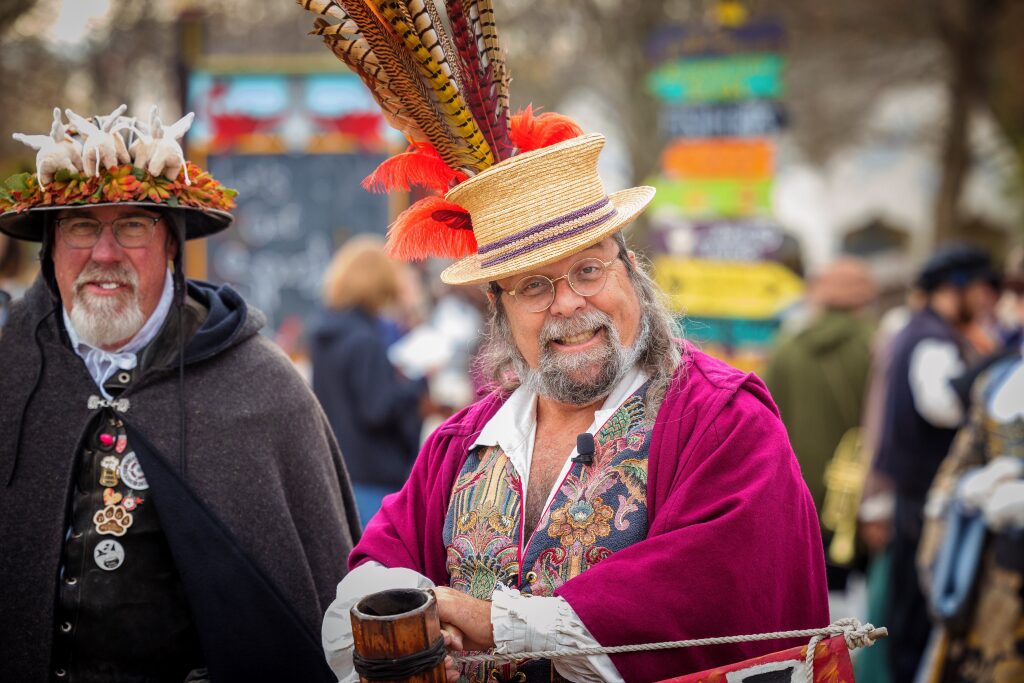
What to Embrace for an Authentic Experience
To fully embrace the Renaissance faire experience, consider incorporating the following elements into your attire:
- Rich, earthy colors such as deep reds, greens, and browns
- Natural materials like linen, cotton, and velvet
- Embroidery, lace, or other embellishments for added detail
- Period-appropriate footwear such as leather boots or Mary Jane shoes
By embracing these elements, you can create an authentic look that will transport you back in time and immerse you in the Renaissance faire experience.
Common Mistakes to Avoid in Your Attire
While dressing for a Renaissance festival can be a fun and creative process, it’s important to avoid common mistakes that may detract from your overall look. Here are a few things to keep in mind:
- Avoid wearing modern clothing or accessories that don’t fit with the Renaissance era aesthetic
- Don’t mix and match different time periods in your attire, as it can create a disjointed look
- Steer clear of costumes that are overly revealing or inappropriate for a family-friendly event
- Avoid wearing ill-fitting or uncomfortable garments that may impact your enjoyment of the faire
By being mindful of these common mistakes, you can ensure that your attire is on point and enhances your overall Renaissance festival experience.
Engaging with the Renaissance Faire Community
Attending a Renaissance faire is not just about the costumes and attractions; it’s also an opportunity to engage with the community and participate in the festivities. Here are a few ways to make the most of your experience:
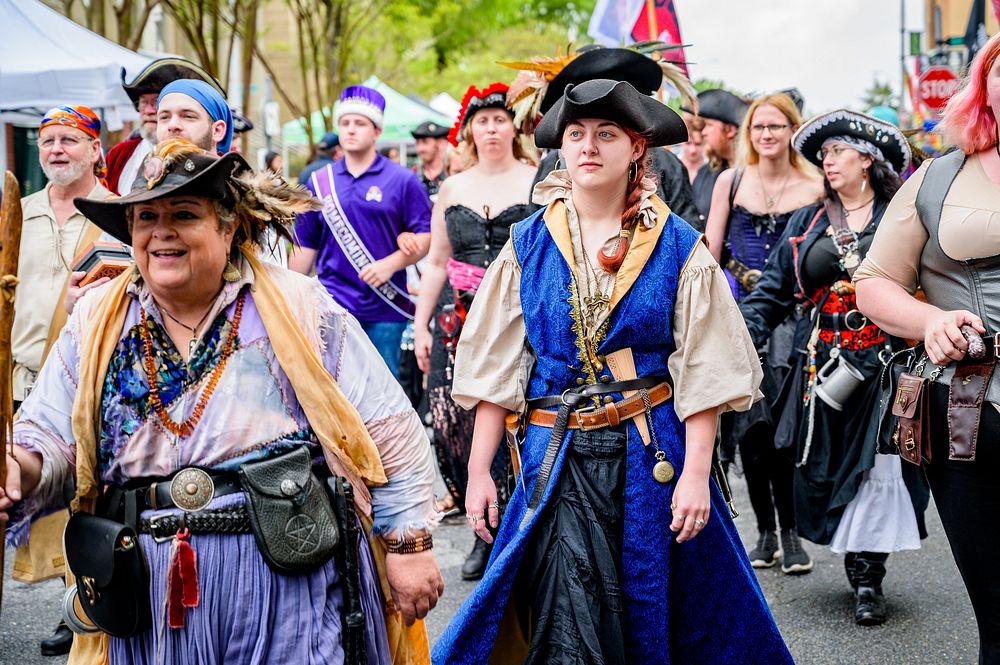
- Attend events and activities offered throughout the faire, such as live performances, jousting tournaments, and artisan demonstrations
- Take part in interactive experiences like archery lessons or dance workshops
- Strike up conversations with fellow faire-goers and learn more about their costumes and experiences
- Join in the merriment and revelry by embracing the spirit of the faire and participating in traditional dances or games
By engaging with the Renaissance faire community, you can create lasting memories and forge new connections with like-minded individuals.
Participating in Events and Activities
One of the highlights of attending a Renaissance faire is the wide range of events and activities available for participants. Here are a few popular options to consider:
- Watch live performances, such as juggling acts, sword fights, and musical performances
- Take part in costume contests or parades to showcase your outfit and compete for prizes
- Engage in interactive activities like archery, axe throwing, or learning traditional Renaissance dances
- Explore artisan booths and support local craftsmen by purchasing handmade goods
- Attend workshops or seminars to learn more about historical or Renaissance-related topics

By actively participating in the events and activities offered at the faire, you can fully immerse yourself in the Renaissance experience and make the most of your visit.
Conclusion
Embracing the spirit of a Renaissance Festival means delving into history and crafting an authentic ensemble. Dive into the era’s fashion and embody a character that resonates with you. Whether noble or peasant, your attire should reflect the essence of the Renaissance period. Thrift shops and online stores offer diverse options for assembling your unique costume. Remember, attention to detail and accessorizing play a crucial role in bringing your outfit to life. By immersing yourself in the community and adhering to festival etiquette, you’ll enhance your experience. Celebrate art, culture, and creativity at the Renaissance Faire, where your historically inspired attire will transport you to a bygone era.
Frequently Asked Questions
How historically accurate does my costume need to be?
While historical accuracy is encouraged at Renaissance faires, there is no strict requirement for your costume to be 100% historically accurate. However, it is recommended to choose attire that is in line with the Renaissance era and reflects the overall aesthetic of the faire. Aim for a look that captures the essence of the time period and adds to the authenticity of the event.
Can I wear fantasy elements in my attire?
Yes, Renaissance faires have expanded their themes to include fantasy elements. Many faires embrace a variety of themes, such as orcs, elves, and fairies. Feel free to incorporate fantasy elements into your attire and unleash your creativity. Just be sure to check the specific theme of the faire you are attending ensure your costume aligns with the overall ambiance.
What are the best materials for a comfortable and authentic look?
When selecting materials for your Renaissance festival attire, opt for natural fibers like linen, cotton, and velvet. These materials are breathable, comfortable, and historically accurate. Avoid synthetic fabrics as they may detract from the authenticity of your look. Additionally, consider the climate of the faire and choose materials that will keep you comfortable throughout the day.






